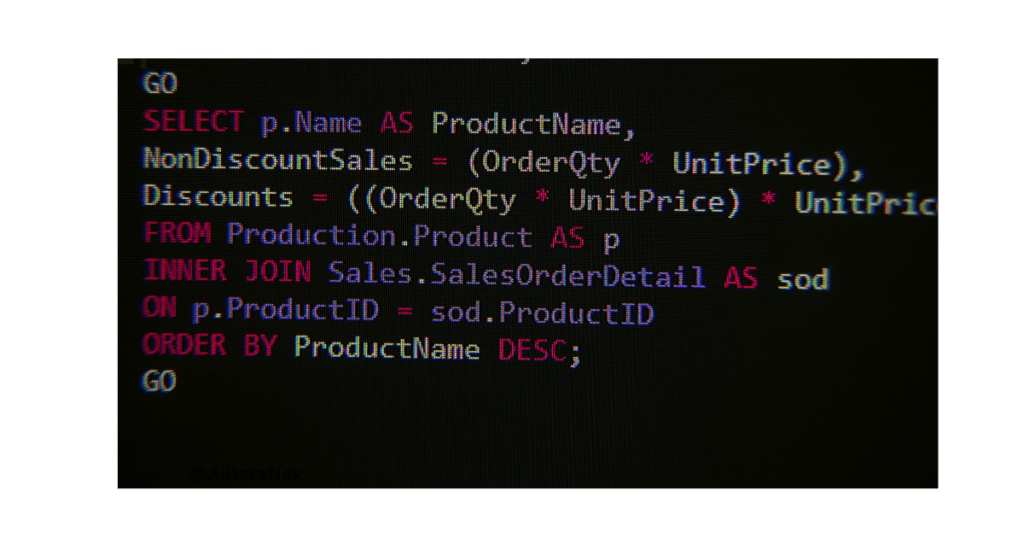Adopt industry-standard SQL practices for cleaner, more efficient code. Learn naming conventions, modular design, and documentation techniques. Improve collaboration and maintainability. Click to level up your SQL skills!
Data scientists often work with large datasets and complex queries. Following SQL coding standards helps in maintaining clarity and consistency in code. Use meaningful table and column names to make your code self-explanatory. Proper indentation and formatting can make SQL scripts more readable and easier to debug.
Optimize queries for performance by avoiding unnecessary computations and using indexes effectively. Regularly update and document your SQL scripts to keep track of changes. These practices not only make your work easier but also facilitate collaboration within teams, ensuring the smooth execution of data science projects.

Credit: www.metabase.com
Consistent Formatting
Use consistent indentation for better readability. Always use four spaces for each indentation level. Avoid using tabs as they can vary in size. Keep SQL statements aligned and structured. It helps in understanding the code quickly. For example, place the SELECT statement and the FROM clause on separate lines.
Use uppercase for SQL keywords like SELECT, FROM, and WHERE. It distinguishes them from table names and columns. Keep table names and column names in lowercase. This practice avoids confusion. Always follow the same convention throughout your code. Consistency makes your SQL scripts easier to read and maintain.
Naming Conventions
Use clear and descriptive names for tables and columns. Avoid using short forms or abbreviations. Always use snake_case for naming, like customer_orders. Use singular nouns for table names, like customer instead of customers. Column names should be self-explanatory, such as order_date or customer_id. Avoid using reserved SQL keywords in names.
Aliases should be short yet meaningful. Use lowercase letters for aliases. For example, SELECT c.name FROM customer AS c. Always use consistent alias names across queries. This helps in understanding and maintaining the code. Avoid single letter aliases except for common terms like t for tables.
Commenting And Documentation
Clear commenting and thorough documentation ensure SQL code is understandable and maintainable. Data scientists benefit from these best practices by facilitating collaboration and debugging.
Inline Comments
Use inline comments to explain complex SQL code. Place them beside the code they describe. This helps others understand your logic quickly. Keep your comments short and clear. Avoid using jargon that others may not understand.
Block Comments
Block comments are useful for long explanations. Place them at the start of a section of code. They can describe the purpose and functionality of the code. Make sure to update comments if you change the code. Clear comments make the code easier to maintain.
Efficient Query Writing
Subqueries can slow down your database. They are often less efficient than other methods. Use joins instead of subqueries when possible. Joins are faster and more efficient. They can also make your code easier to read. Indexes can help improve performance when using joins. Always try to avoid nested subqueries.
Joins combine rows from two or more tables. Use INNER JOIN to get matching records from both tables. LEFT JOIN returns all records from the left table. RIGHT JOIN returns all records from the right table. FULL JOIN returns records when there is a match in one of the tables. Indexing columns used in joins can help performance.
Error Handling
SQL errors happen often. Syntax errors are the most common. These occur due to typos or missing punctuation. Another common error is missing tables or columns. This happens when the database schema changes. Data type mismatches also cause errors. Always check your data types before running queries.
Use print statements to debug SQL. These help you see intermediate results. Another technique is to break down complex queries. Run each part separately. This makes it easier to find errors. Logging can also be useful. Keep a log of all queries. This helps track down issues later. Always test your queries in a development environment first.

Credit: www.datacamp.com
Performance Optimization
Indexes help speed up queries. They make data retrieval faster. Clustered indexes store rows in a table. Non-clustered indexes create a separate structure for data. Use indexes on columns used in WHERE clauses. Avoid creating too many indexes. Too many indexes can slow down INSERT and UPDATE operations. Keep an eye on the index usage.
Query Execution Plans show how SQL Server processes queries. They help identify slow queries. Use the EXPLAIN command to see the execution plan. Look for table scans and index scans. Table scans can slow down queries. Index scans are faster but can still be improved. Analyze the execution plan to find bottlenecks. Optimize queries based on this analysis.
Security Practices
Always use prepared statements to prevent SQL injection. These statements separate SQL code from data. Never allow user input directly into SQL queries. This makes it harder for attackers to manipulate queries.
Sanitize and validate all user inputs. Ensure they meet the expected format. Use parameterized queries to bind variables. This makes the code cleaner and more secure.
Limit access to the database by using role-based access control (RBAC). Assign roles based on the principle of least privilege. This means users get only the access they need.
Always audit database access and actions. Keep logs to track who accessed what data. Regularly review and update permissions. Remove access for users who no longer need it.
Version Control
Version control helps in tracking changes to your SQL code. It keeps a record of every edit. You can see who made each change. This makes it easy to revert to older versions if needed. Tools like Git are very useful for this. They provide a clear history of modifications. This also aids in identifying errors.
Collaborative coding allows multiple data scientists to work on the same project. It ensures that everyone is on the same page. Version control systems help in merging code from different contributors. They also resolve conflicts smoothly. This promotes teamwork and enhances productivity. Proper documentation is key in this process. It helps others understand the changes made.

Credit: www.spiceworks.com
Frequently Asked Questions
What Are Sql Coding Standards?
SQL coding standards are guidelines for writing clean, readable, and maintainable SQL code. They include using proper indentation, consistent naming conventions, and clear, concise comments. Following these standards improves collaboration and reduces errors. Use uppercase for SQL keywords and lowercase for table and column names.
Which Of These Are Standards And Best Practices For Sql?
Standards and best practices for SQL include using proper naming conventions, indexing appropriately, writing clear and concise queries, normalizing data, and using transactions to ensure data integrity.
Which Sql Is Best For Data Science?
The best SQL for data science is PostgreSQL. It offers powerful analytics, scalability, and extensive support for complex queries.
How Much Sql Should A Data Scientist Know?
A data scientist should know basic SQL for querying databases, joins, aggregations, and data manipulation. Advanced SQL skills are a plus.







